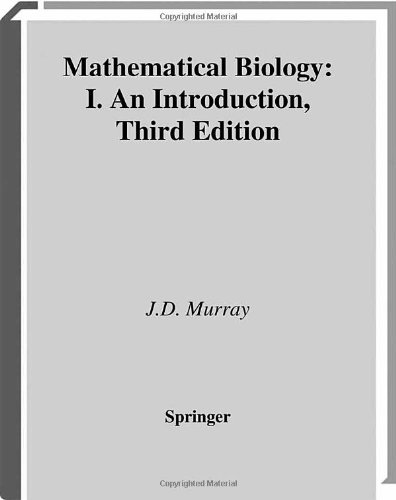

Most ebook files are in PDF format, so you can easily read them using various software such as Foxit Reader or directly on the Google Chrome browser.
Some ebook files are released by publishers in other formats such as .awz, .mobi, .epub, .fb2, etc. You may need to install specific software to read these formats on mobile/PC, such as Calibre.
Please read the tutorial at this link: https://ebookbell.com/faq
We offer FREE conversion to the popular formats you request; however, this may take some time. Therefore, right after payment, please email us, and we will try to provide the service as quickly as possible.
For some exceptional file formats or broken links (if any), please refrain from opening any disputes. Instead, email us first, and we will try to assist within a maximum of 6 hours.
EbookBell Team

5.0
40 reviews
ISBN 10: 0387952233
ISBN 13: 9780387952239
Author: James D Murray
It has been over a decade since the release of the now classic original edition of Murray's Mathematical Biology. Since then mathematical biology has grown at an astonishing rate and is well established as a distinct discipline. Mathematical modeling is now being applied in every major discipline in the biomedical sciences. Though the field has become increasingly large and specialized, this book remains important as a text that introduces some of the exciting problems that arise in biology and gives some indication of the wide spectrum of questions that modeling can address. Due to the tremendous development in the field this book is being published in two volumes. This first volume is an introduction to the field, the mathematics mainly involves ordinary differential equations that are suitable for undergraduate and graduate courses at different levels. For this new edition Murray is covering certain items in depth, giving new applications such as modeling marital interactions andtemperature dependence sex determination
Chapter 1: What is Mathematical Biology?
Chapter 2: Continuous Models: Differential Equations
Chapter 3: Discrete Models: Difference Equations
Chapter 4: Linear Algebra in Biology
Chapter 5: Probability and Statistics in Biology
Chapter 6: Spatial Models and Pattern Formation
Chapter 7: Modeling Disease Dynamics (Epidemiology)
Chapter 8: Evolutionary Biology and Genetics
Chapter 9: Cellular and Molecular Biology
Chapter 10: Neuroscience
Chapter 11: Ecology and Ecosystems
Chapter 12: Computational Tools for Mathematical Biology
Chapter 13: Data-Driven Mathematical Biology
Chapter 14: Challenges and Future Directions
mathematical biology. an introduction
mathematical biology an introduction
mathematical biology an introduction with maple and matlab
mathematical biology an introduction with maple and matlab pdf
mathematical modeling in systems biology an introduction
Tags: James D Murray, Mathematical, Biology, Mathematical